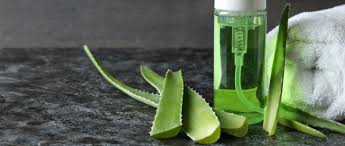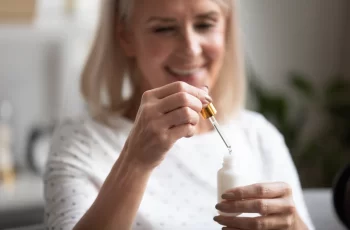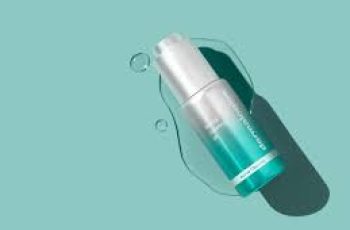
Uses and Benefits of Aloe
Aloe is a family of plants with medicinal properties. Aloe can be applied topically (to the skin) or taken orally (by mouth) to help prevent and heal certain health conditions, such as acne and burns.12
Aloe vera is the most common type in aloe-based products. It originates from the cactus-like Aloe barbadensis Miller plant.3 Research has found that the active compounds in aloe vera may help protect bones and prevent conditions like cancer and diabetes.4
Aloe is generally safe, but negative reactions, including allergic reactions and aloe poisoning, can occur. It can also trigger skin conditions like eczema.
Types of Aloe and Their Uses
There are over 500 species of aloe, which all have different characteristics and uses.5 Some of the more common types of aloe used in medicines and topical products include Aloe vera and Aloe arborescens.15
Aloe Vera (Aloe Barbadensis Miller)
Aloe vera originates from the Aloe barbadensis Miller plant, which contains over 200 bioactive compounds that support health. Most of these compounds reside in the inner clear gel of its leaves.6
Aloe vera is used in medicines and skincare products—often in gels and creams.4 It has shown moisturizing and wound-healing properties when applied directly to the skin.7 Its healthful compounds include polysaccharides, flavonoids, amino acids, and phenolic acids:6
Polysaccharides: Carbohydrate molecules that provide energy to plant cells. Some materials used for wound healing and medicines are derived from the polysaccharides in Aloe vera.8
Liu C, Cui Y, Pi F, Cheng Y, Guo Y, Qian H. Extraction, purification, structural characteristics, biological activities and pharmacological applications of Acemannan, a polysaccharide from Aloe vera: A review. Molecules. 2019;24(8):1554. doi:10.3390/molecules24081554
Flavonoids: Natural plant substances that contain anticancer, antioxidant, anti-inflammatory, and anti-viral properties. These substances have also been shown to protect the heart and brain.9
Amino acids: The basic building blocks of proteins. Amino acids perform many functions, including helping the body break down food and repairing body tissue. They also act as a source of energy for the body.10
Phenolic acids: Natural antioxidants that reduce the risk of oxidative stress in the body. A buildup of oxidative stress in the body can eventually lead to diseases such as cancer, heart disease, and diabetes.11
When applied to the skin, aloe might reduce symptoms of conditions like acne and burns.2
Aloe consumed orally has been shown to help with weight loss, cancer, diabetes, hepatitis (liver inflammation), and inflammatory bowel disease, or IBD (conditions that involve long-lasting inflammation of the digestive tract).42
Certain Aloe vera compounds, including aloin, may help protect the bones and slow the progression of bone diseases such as osteoporosis (bone loss). While research is promising, more clinical trials are needed to determine how Aloe vera and its compounds protect the body from certain conditions.4
Aloe Arborescens
Aloe arborescens has shown antioxidant effects in clinical studies.12 Antioxidants are compounds that inhibit the growth of free radicals—molecules that can harm the body’s cells. However, most research focuses on Aloe vera.12
Aloe arborescens contains a higher concentration of fatty acids than Aloe ferox or Aloe vera. These fatty acids efficiently coat the plant and act as a barrier to environmental stressors.12 They include linoleic acid and linolenic acid, which are polyunsaturated, omega-6 fatty acids considered essential fats (fats our bodies cannot produce on their own).1314
Polyunsaturated fats are a type of healthy fat needed for brain health and for the body’s cells to function properly. Omega-6 fatty acids help with cell function.1314
Aloe Ferox
Aloe ferox is one of the most widely used medicinal plants. It has shown promise in reducing body weight, body mass index (BMI), low-density lipoprotein (LDL) cholesterol, and fasting blood glucose (FBG). Research shows these health benefits may be driven by certain compounds found in aloe ferox that naturally detoxify and act as a natural laxative to promote bowel movements.15
Other studies show that Aloe ferox has antioxidant, antimicrobial, and anti-cancer properties.16
Further studies on aloe ferox are needed on safety and efficacy, as the plant can only be used for limited periods due to side effects.15
Aloe Perryi
Aloe perryi is an herb that has shown antioxidant, antibacterial, and anti-cancer effects in clinical studies.1718 Extracts are used in medicines to treat many conditions, including cancer. Research is still determining the most effective way to administer it.18
Aloe perryi contains many phytochemicals (plant chemicals) that help fight disease. These include flavonoids and other compounds, including:18
Glycosides: Plant-derived compounds of one or more sugars that combine with a hydroxy compound (a compound of one oxygen atom chemically bonded to one hydrogen atom). Glycosides have shown anti-inflammatory and antioxidant activities that help with disease prevention and management.19
Proteins: Complex molecules that play many roles in the body. They are required for the function, structure, and regulation of the body’s tissues and organs. Proteins contain amino acids, which help the body digest food, repair body tissue, and produce energy.20
Phenols: Antioxidants with anti-inflammatory actions that help prevent the buildup of oxidative stress in the body that can lead to chronic (long-lasting) conditions like diabetes, cancer, and heart disease.21
The flowers of Aloe perryi have been studied for their rich phytochemical content, which might help prevent the growth of cancer cells.22
How To Use
Aloe dosages depend on the type and usage. While aloe has been used as a laxative in juices and other consumable products, it is no longer approved for this use by the U.S. Food and Drug Administration (FDA) because of a lack of safety data.3
Aloe vera gel can be applied to the skin as an ointment to speed up wound and burn healing, or to help treat acne.322Aloe vera is also found in drinks, capsules, powders, and food flavorings (as an additive).3
Aloe arborescens can be consumed as a juice or applied as a gel. The dosage varies depending on the condition being treated.2312
Aloe ferox can be consumed as a supplement.15 One study provided participants with two capsules per day at a dosage of 460 milligrams (mg) for two weeks, followed by a 2-week break. This cycle was repeated three times. After three months, participants saw significant improvements in body weight, body mass index (BMI), low-density lipoprotein cholesterol (LDLc), and fasting blood glucose (FBG).15
Extracts of Aloe perryi are used in medicinal settings for wound healing and to treat conditions like cancer.18 A healthcare provider administers the medication and treatment.
Always discuss dosages and uses of aloe with your healthcare provider before adding it to your routine.
Safety and Side Effects
When consumed by mouth or applied to skin correctly, aloe is safe and well-tolerated.2 However, people who are pregnant should avoid taking it.2 Other risks include aloe poisoning and allergic reactions.
Aloe Poisoning
Aloe poisoning can occur if certain preparations (such as in the form of whole leaf extract, latex, or gels) are swallowed.24 Symptoms of aloe poisoning include:25
Severe abdominal pain
Vision loss
Difficulty breathing
Diarrhea
Rash
Swelling of the throat
Vomiting
Skin irritation
Call your local emergency number or a local Poison Control Center if you experience any of the above symptoms after using aloe. You can also call the national toll-free Poison Control hotline at 1-800-222-1222. Get medical help right away if you think you have aloe poisoning.25
Aloe Allergy
Some people are allergic to aloe. Symptoms of an aloe allergy include:25
Chest pain
Tightness in the throat
Rash
Breathing difficulty
Other Side Effects
Other side effects include skin reactions, gastrointestinal (digestive) reactions, and acute hepatitis. For example:2
Topical use of aloe gel may cause burning, eczema, and itching (pruritus). If this happens, discontinue use and speak to your healthcare provider.
Oral use of aloe latex may cause cramping or abdominal pain.
Consuming aloe leaf extracts between periods of anywhere from three weeks to five years has been associated with cases of acute hepatitis.
Choosing An Aloe Product
When selecting an aloe product, factors to consider include the intended use, whether it is taken orally or applied topically, and the type of aloe.
Supplements are not regulated by the FDA, but the FDA has approved Aloe vera as a food additive for flavor.263 If taking an aloe supplement, check the label to see if it is third-party tested. This means the product has been tested for quality and only contains the ingredients listed on the bottle.27
When choosing aloe-based creams or gels, opt for ones made from whole-leaf extracts that have been decolorized. Whole-leaf extracts of aloe vera that have not been properly processed have been linked to cancer.28
Speak to a healthcare provider if you are unsure which type of aloe is right for you. Always take aloe products as prescribed or instructed on the product package.
A Quick Review
Aloe is a family of plants that boast many therapeutic and medicinal properties, from speeding up wound healing to helping treat conditions such as cancer. Aloe can be applied topically to the skin or consumed orally, depending on the type and form.
Aloe vera is the most commonly used type of aloe. Aloe perryi, Aloe ferox, and Aloe arborescens are other types.
Rich in plant chemicals that demonstrate antioxidant and anti-inflammatory activity, aloe is a versatile plant with many benefits for your overall health. It’s a natural substance, so use it with caution. Aloe poisoning or allergy is possible. See a healthcare provider as soon as possible if you experience symptoms of aloe poisoning or allergy—such as vision loss, rash, or skin irritation.


